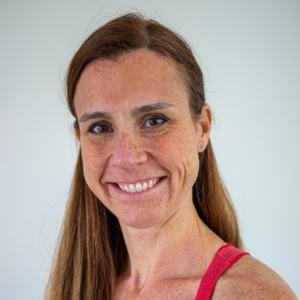by Sarah Apple Kingsley, pt, dpt
Scientists, physical therapists, and physicians have always known balance to be an important aspect of health. Falls and fall-related injuries, incidences, and hospitalizations account for a major portion of our healthcare expenses. There is now new information that actually confirms that balance is a key proponent of good health and longevity. In a recent study published in the British Journal of Medicine Longevity scientists administered a ten-second balance test to 1,792 people aged 51 to 75.1
They coined it the “flamingo test,” with each person asked to stand barefoot on one leg while keeping their other leg lifted in the air. Importantly, they were required to keep their head upright and their arms straight at their sides for ten seconds. This is very similar to tree pose and the knee-to-chest postures we practice in LYT yoga.
Twenty percent of the participants wobbled and could not complete the test, especially at the top end of the age bracket. For the 20% of participants who failed the test, there was a higher correlation with being overweight, having heart disease, high blood pressure, poor lipid panels, and these individuals were twice as likely to have Type-2 Diabetes.
Subsequent findings that the researchers discovered after checking back in with the participants 7 years later were even more compelling. After accounting for age, gender, and underlying health conditions, the inability to pass the flamingo test was linked to an 84% higher risk of all-cause death* over that seven-year period. In addition to longevity, these researchers contend that balance is necessary for overall health, well-being, and independence.
* What is all-cause death? Death by multiple causes, or by any cause.
Balance and its role in optimum health
When my patients tell me they don’t need to be able to stand on one leg, I quickly respond “Oh yes you do!” We regularly need a one-legged posture to move out of a car or to climb or descend a step or stairs. Simply walking without an assistive device requires a portion of the gait cycle to be in a single-limb stance.
To lack this ability or have fear of standing on one leg can lead to a loss of autonomy and consequently, less exercise, less movement, and a worsening of various health conditions. Many physical therapists and experts feel balance should be included when checking vital signs. Walking speed has been considered the 6th vital sign, but we should give serious consideration to adding the flamingo test as well!
If you want to stay active it is paramount that you maintain your physical well-being. When it comes to balance there is definitely some truth in the saying “if you don’t use it, you’ll lose it.” Healthy physical well-being includes strength, flexibility, balance, and effectively using your senses—vision, hearing, feeling physical sensation, etc.
Balance can be affected by a variety of factors including age, spinal stenosis, pinched nerves, and inner ear issues. If you don’t have any of these issues but still consider yourself to have had poor balance your entire life, THERE IS SOMETHING YOU CAN DO ABOUT IT!
Easy ways to improve your balance
The Harvard Medical School newsletter offers some simple advice for improving your balance, including:2
- Sign up for a balance-focused class (such as tai chi) at your local YMCA or senior center.
- Walking, biking, and stair climbing all strengthen key balance muscles in the lower body.
- Stretching loosens tight muscles which can otherwise negatively impact posture and balance.
- Yoga strengthens and stretches tight muscles while challenging static and dynamic balance.
The LYT yoga method specifically retrains our core musculature and balance centers, challenging our single-limb stance and causing our bodies to get in touch with new neuromotor pathways that were previously unattainable. Each day with the LYT method is a small improvement toward healthier aging!
You can also incorporate balance moves into your everyday life. Try standing on one leg while brushing your teeth or getting up from a chair without using your hands. It’s worth the extra effort because the research strongly suggests that better balance now means better quality of life and healthier aging later.
References:
1 http://press.psprings.co.uk/bjsm/june/bjsm105360.pdf
2 https://www.health.harvard.edu/staying-healthy/easy-ways-to-improve-your-balance











